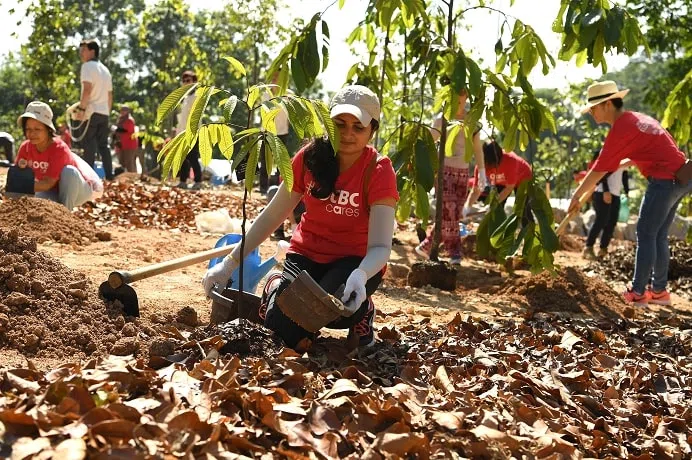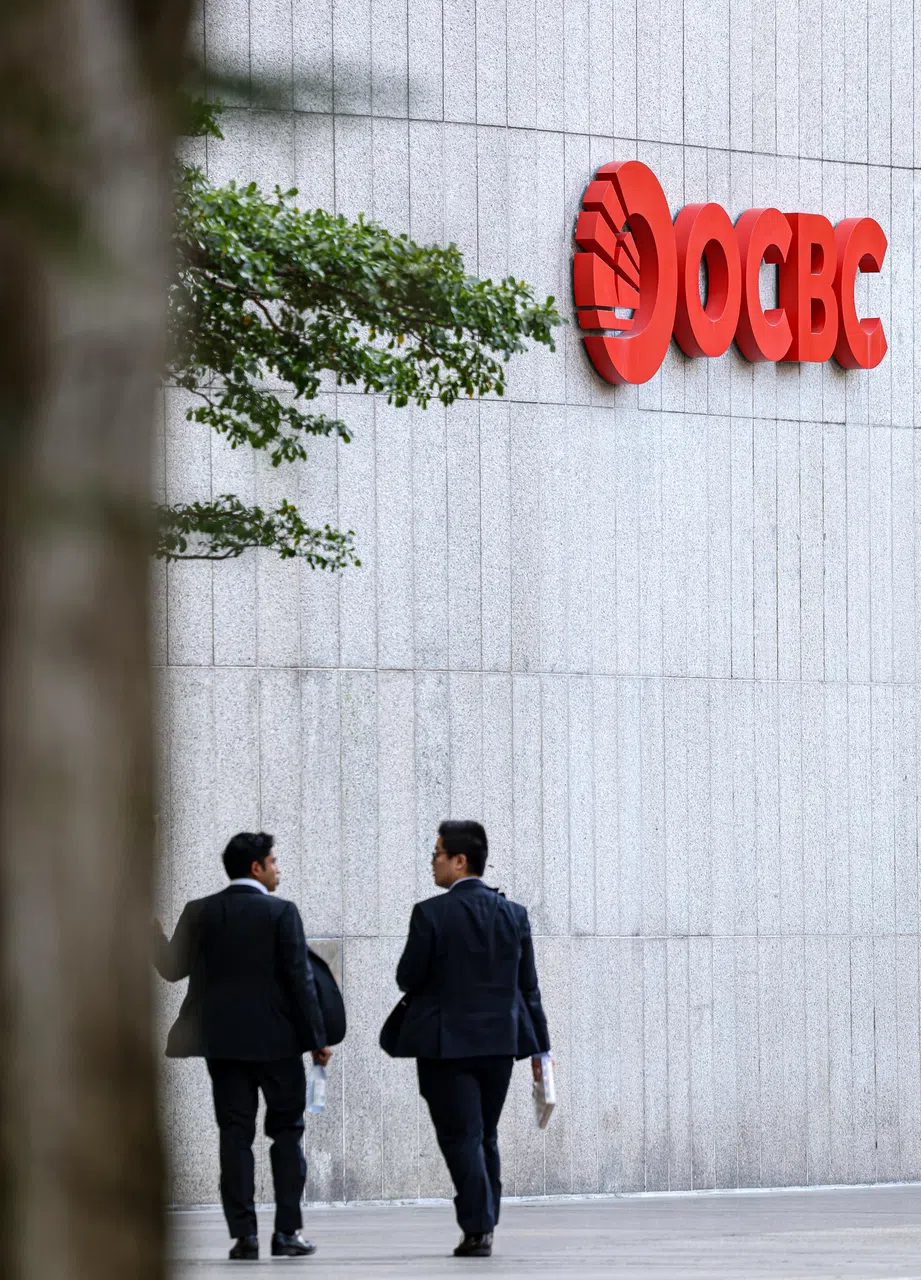SOUTH-EAST Asia’s shockingly high temperatures have recently made headlines, with some countries experiencing temperatures over 40 degrees Celsius. Last year was reportedly the hottest in Singapore, and 2024 is set to be even hotter.
Lim Liang Jim, senior director of international biodiversity conservation at the National Parks Board (NParks), said: “Singapore’s small size makes its ecosystems highly vulnerable to the impacts of global climate change and its associated extreme weather events.”
Additionally, with the city-state’s status as a global business hub, environment, social and corporate governance efforts have become increasingly important, said a Singapore Exchange spokesperson.
In that regard, OCBC has stepped up its sustainability initiatives over the past decade. Many of them focus on reforestation, which promotes carbon sequestration, or the act of capturing and storing carbon dioxide from the Earth’s atmosphere.
Lim added: “When carbon stocks are accumulated and stored long term, they are an effective method of mitigating climate change.”
One such initiative is the OCBC Arboretum, located at Singapore’s Botanic Gardens. Established in 2019, the arboretum houses around 2,000 Dipterocarp trees, which can absorb 80 million kg of carbon dioxide.
A NEWSLETTER FOR YOU
ESG Insights
An exclusive weekly report on the latest environmental, social and governance issues.
These trees store more carbon than other kinds, and form the “backbone of South-east Asian tropical forests”, said OCBC. In addition to storing carbon, they provide 50 to 80 per cent of forest canopy and serve as habitats for various other plants and wildlife.
“The seeds produced from these trees will also be propagated for reforestation,” the bank added, further increasing the trees’ ability to sequester carbon.
Using technology for reforestation
The idea for the arboretum came about after consultations with NParks. OCBC realised that it should focus on conservation, research and education.
“Developing OCBC Arboretum will provide scientists with a deeper understanding of Dipterocarps and provide an outdoor classroom for everyone to learn about conservation efforts, as well as participate in forest restoration activities,” the bank said.
It added: “Beyond mere tree planting, our forestation projects employ research and technology to derive sustainable carbon storage outcomes.”
Technology was key when developing the arboretum.
Lim said: “(It) utilises environmental sensors to remotely and continuously monitor the trees and their environment as they grow.”
Forest restoration is crucial not only to store carbon, but also because many Dipterocarp species are critically endangered due to deforestation and natural loss. These trees continue to be threatened by illegal logging in the region.
“By planting a living collection of trees and investing in technology to understand the conditions for better growth, OCBC and NParks hope to ensure the survival of these trees and mitigate the impact of climate change,” the bank said.

It hopes that the technology deployed will assist it in reforestation and tree management. “Understanding the conditions required for (Dipterocarps’) growth and health will also enable us to restore the secondary forests in nature parks and other disturbed areas to approximate maturity in time.”
OCBC has partnered NParks since 2017 on several green initiatives, leading to the conservation of biodiversity, promotion of environmental education and awareness programmes, and more green spaces in Singapore.
On the arboretum, the bank said: “By being the first corporate entity to partner NParks in such efforts, OCBC hopes that the support will spur and encourage more organisations to join similar projects to further research and conservation efforts for future generations.”
Beyond the arboretum
Another initiative OCBC has embarked on is the planting of more than 100 Taxodium distichum trees at Dongtan Wetland Park in Chongming Island, China. These trees can absorb more than 11,000 kg of carbon dioxide.
This park was chosen because of its saline-alkaline land, which is most suitable for this type of tree. Its “strategic location” is due to its significance to the ecosystem and surrounding species, such as the endangered Yangtze alligators. Furthermore, according to 2023 data, the forest coverage rate of Chongming Island increased to 30.62 per cent, accounting for nearly one-third of Shanghai’s total forest area.
The bank added: “Planting Taxodium distichum trees can increase greening and reduce carbon emissions more efficiently.”
OCBC’s other carbon sequestration efforts include a mangrove park and project in Malaysia, as well as a habitat enhancement programme at Coney Island. It also plans to ramp up mangrove-planting efforts in Indonesia.
In total, OCBC’s combined forestation efforts have absorbed more than 111 million kg of carbon dioxide since 2017.
Other green efforts
The bank has worked to reduce carbon emissions from cars, minimise waste, eliminate single-use plastics at events and maximise resources.
In 2017, OCBC launched the #OCBCCares Environment Fund to support ground-up sustainability projects. So far, it has funded 18 projects amounting to S$323,000.
Additionally, the bank established the OCBC Climate Index in 2020 to measure levels of sustainability awareness and climate action among Singaporeans, while also raising awareness of carbon emissions from human activities. Data collected from the index is used to guide and encourage green practices.
Besides NParks, OCBC has several partners for green initiatives, including the National University of Singapore, Global Environment Centre and Ocean Park Conservation Foundation Hong Kong. It will continue its green journey in accordance with global and local environmental plans to achieve a low-carbon economy.
The lender added that efforts to mitigate climate change can go beyond donations and tree planting. “Companies can partake in several methods, such as setting ambitious emission reduction targets, transitioning to renewable energy, taking a ‘top-down’ approach and getting leaders (to) endorse the undertaking of energy-efficient measures.”





